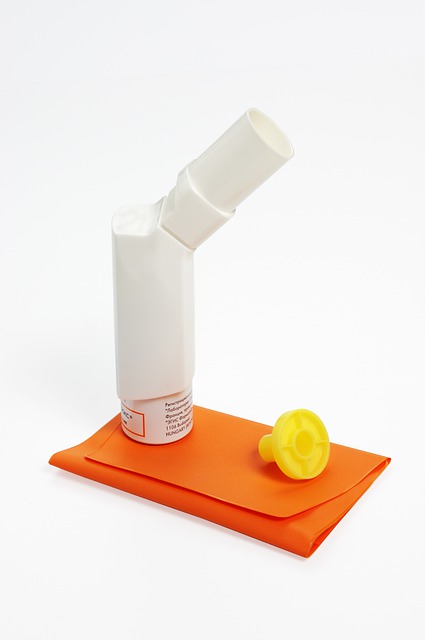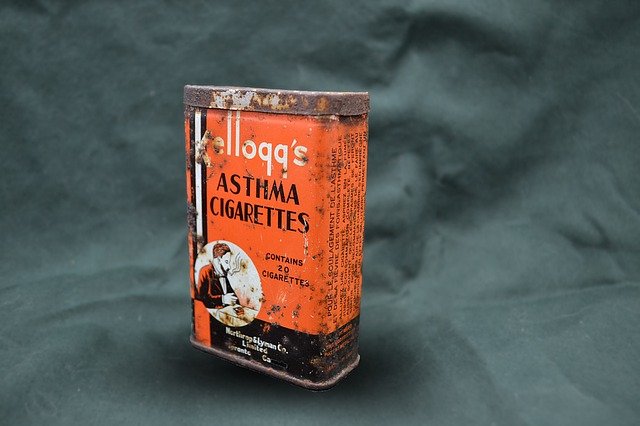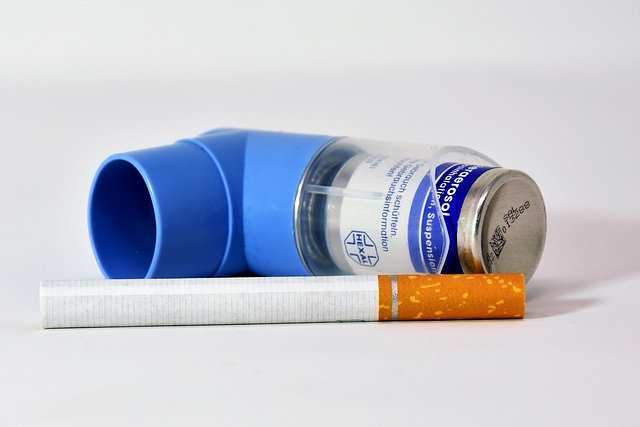Assignment
Asthma Case Scenario
|
NUR2800 Simulated Practice Assignment Marks SheetS2_2017 Ms Sheila Crane |
Student Name: Student Number: ________________
Question 1 /15 marks
Asthma: Asthma is a chronic airways disease. It is a common disorder of the lung which causes inflammation of the airways causing obstruction to airflow. Several allergens such as dust particles, air pollutants such as smoke can lead to trouble breathing or breathlessness and can lead to sudden attacks of asthma.
The patient is 17 years old but having asthma symptoms since the age of 5. Thus, the symptoms of asthma can be observed at any age, but children are most susceptible as compared to adults.
Asthma attack: An asthma attack in medical terms known as asthma exacerbation is a condition where the patient airway becomes inflamed and swollen due to muscle contraction. In this attack, the airways secrete excessive mucus which narrows the bronchial tubes making it difficult to breathe. This is also accompanied by coughing or wheezing.
The other common symptoms of asthma are shortness of breath and tightness of the chest, stress and anxiety. The symptoms of asthma in the patient show breadth shortness, audible wheeze, dry cough and anxiety. During the attack, there is a sudden deterioration of these symptoms due to airways (bronchospasm) muscle tightening this condition can worsen from mild to severe attack which can become a life-threatening situation.
According to the American Academy of Allergy, Asthma & Immunology, the asthma attack has led to 250,000 annual deaths globally due to allergens, exposure to fumes and smoke in the workplace. It is estimated that the symptoms of asthma will be seen in more than 100 million people by the year 2025.
Figure 1 Mortality Rate for Asthma among different age groups in different countries (Global Asthma Network, 2014)

Question 2 /20 marks
The nursing assessments for Shiela Crane will be to check for vital signs like body temperature, blood pressure, pulse rate, respiration rate and oxygen saturation level. The nurse is required to observe for breadth shortness, audible wheezing or coughing and any signs of patients anxiety during admission.
This needs to be documented and monitored for any changes in later observations. The nursing care plan for Sheila Crane for Asthma includes a nursing plan for ineffective breathing patterns, ineffective airway clearance (Spross, 2014), anxiety and lack of knowledge.
Ineffective breathing patterns and ineffective airway clearance will affect Shelia Crane ability to receive continuous clear airways due to conditions of asthma and allergic airways and unable to clear secretions from the respiratory tract.
The nurse will look after the patient safety by monitoring the respiration rate and nasal flaring as it will affect the breathing pattern and an indication of respiratory distress. The nurse will also check breathing/wheezing sounds to identify obstruction in airways (Thompson et al., 2013), take chest x-ray, monitor temperature every four hours and aid the patient bed position and in sit different position for better respiratory function, help the patient to learn breathing techniques and self-management under severe attack.
The elevated bed position will help the patient in maximum lung expansion for struggle-free breathing. To avoid the patient to get anxious the nurse will communicate politely with the patient to listen to the patient feeling and concerns and educate the patient about different breathing techniques to reduce the anxiety due to struggle in breathing and allergens to narrow the lack of knowledge about the lung disease, symptoms that can trigger an asthma attack and self-management techniques. This will help the patient to cope with anxiety related to troubled breathing.
Question 3 /20 marks
The use of Clinical Reasoning (CR) for the nurse and its effective application when caring for Sheila Crane helps the nurse to provide an appropriate care plan and the right reason to take the right action timely (Dickson and Flynn, 2012). During the acute asthma episode of Sheila Crane, the nurse advised increasing the puff dosage from two to six puffs of Salbutamol as prescribed medications.
The five rights of CR are right cues (which showed acute auscultation symptoms of breadth shortness and wheezing and the administration of oxygen via a nasal cannula showed 36% (4Litres). right patient (who is Sheila Crane with a long history of asthma since childhood and suffering from severe form of asthma and showing health risk conditions), the right time (the nursing invention was taken at the right time and sequence), Right Action (the correct action is identified and undertaken by a nurse by making the patient by suggesting a breathing technique and semi-fowlers position to increase maximum intake of air) and right reason which is for an asthma attack.
According to Dickson and Flynn (2012), these five right of CR is to enhance the skills of clinical reasoning to improve the ability of the nurse to manage the patient assuring risk conditions.

Question 4 /15marks
The medication orders for the patient in asthma condition are Ventolin (Salbutamol), Flixotide and oxygen therapy.
Ventolin (Salbutamol) inhaler is used to relieve breathing problems like asthma. The Ventolin contains salbutamol which is useful to open up the narrow airways to make the breathing process easier in asthma patients.
the salbutamol effect the beta 2 receptors which are stimulating receptors present in the lungs which cause the contracted muscles to relax and makes the airways relax to facilitate a normal breathing function. This medication will help Sheila Crane to easier to breadth by opening of the airways passage for air to pass easily in and out of the lungs.
Flixotide Inhaler is a pressurised metered-dose aerosol. This inhaler will provide the patient fluticasone propionate per actuation through a mouthpiece. It will provide 120 actuations to the patients. The puff of fluticasone propionate will be useful for the patient as it will have an anti-inflammatory effect on the lungs.
It will reduce the asthma exacerbations and related symptoms in Sheila Crane. As the patient is suffering from severe asthma due to constant symptoms and exacerbations which is life-threatening, this requires regular medical assessment. This condition cannot be treated with a bronchodilator alone so require a high variant of oral therapy by oral corticosteroids to provide relief from inflammation.
The oxygen therapy or treatment for the severe asthma condition of the patient is the last medication order. This will help in the oxygenation of the cells that will provide a high concentration of oxygen to lungs cells to combat the asthma attack and it will also cleanse and detoxify the patient body.
Question 5 /15 marks
Improve asthma control and spreading its awareness among the different age groups especially adolescents and different social classes is a challenging task. The asthma control for Sheila Crane is through the guidance of an asthma action plan which fulfils the requirement of patients by healthcare professionals.
The health care providers educate the family of Sheila Crane to avoid the use of non-steroidal anti-inflammatory medicines and other medicines like aspirin which can trigger the asthma attack (Lourenço et al., 2014).
The patient will be told that this severe asthmatic condition demands continuous effort from the health professionals as well as the patient to increase awareness about asthma as chronic lung disease and to teach the patient and family members to identify the symptoms and trigger points for effective management of asthma.
Asthma control can be through accurate medications to safeguard against allergens, pollutants, irritants and prevents inflammation of the airways.
It is, therefore, essential to provide awareness with the patient regarding the environmental causes of asthma, cold infections and physical activities as simulators of asthma attacks in exiting conditions along with avoidance of common things in a household which can trigger asthmatic symptoms like animal fur, dust mites, etc.
Additionally, a self-management workshop for the patient (Rasberry et al., 2015), adherence to good medication prescribed by health care providers will provide better asthma control for the patient. The patient will also be asked to participate or present in the event on a global level of World Asthma Day each year on the first Tuesday of May.
Question 6 /15 marks
Understanding the use of the Peak Flowmeter and Asthma Action Plan
The peak flow meter is cost-effective, portable and handheld device that can be used to measure the air movement in the lungs. It is useful for the patient with Asthma to measure the peak flow to manage the asthma symptoms and prevent asthma attacks (Thompson et al., 2013). It works by measuring the flow of air in the lungs when forcefully exhale the air after a full inhalation.
This measurement is presented in peak expiratory flow (PEF) that is effective to know the conditions of the symptoms of asthma. It is useful in recognizing early changes that may be signs of worsening asthma. It is also used to determine when to use asthma inhaler or take asthma medicine. It also helps to know how to stop the narrowing of the airways quickly and avoid any severe attack.
Asthma action plan is related to maintenance of daily records of PEFs and developing an understanding of how this pattern is related to changes in asthma. it is helpful in managing asthma episodes. In this plan, a traffic light system is used having three zones namely green, yellow and red. Green zone indicates well-controlled asthma having PEF between 80% and 100%.
The yellow zone shows poorly controlled asthma having PEF between 50% and 80%, whereas the red zone shows the requirement of emergency care having less than 50% PEF.
To determine asthma zones, personal best PEF is multiplied by 1, 0.8 and 0.5. If the individual is in the yellow or red zone, he/she needs to take medicine as per the instructions.
References
American Academy of Allergy, Asthma & Immunology. (2017). Asthma Statistics. Retrieved from: http://www.aaaai.org/about-aaaai/newsroom/asthma-statistics
Dickson, G. L., & Flynn, L. (2012). Nurses’ clinical reasoning: Processes and practices of medication safety. Qualitative Health Research, 22(1), 3-16.
Global Asthma Network. (2014). The Global Asthma Report 2014. Retrieved from: http://www.globalasthmareport.org/burden/mortality.php
Lourenço, O., Calado, S., Sá-Sousa, A., & Fonseca, J. (2014). Evaluation of allergic rhinitis and asthma control in a Portuguese community pharmacy setting. Journal of Managed Care Pharmacy, 20(5), 513-522.
Rasberry, C. N., Cheung, K., Buckley, R., Dunville, R., Daniels, B., Cook, D., & Dean, B. (2014). Indicators of asthma control among students in a rural, school-based asthma management program. Journal of Asthma, 51(8), 876-885.
Spross, J. A. (2014). Conceptualizations of Advanced. Advanced practice nursing: An integrative approach, 27.
Thompson, C., Aitken, L., Doran, D., & Dowding, D. (2013). An agenda for clinical decision making and judgement in nursing research and education.International journal of nursing studies, 50(12), 1720-1726.



Fantastic article.Really thank you! Want more.
https://lennye232vhm6.dgbloggers.com/profile